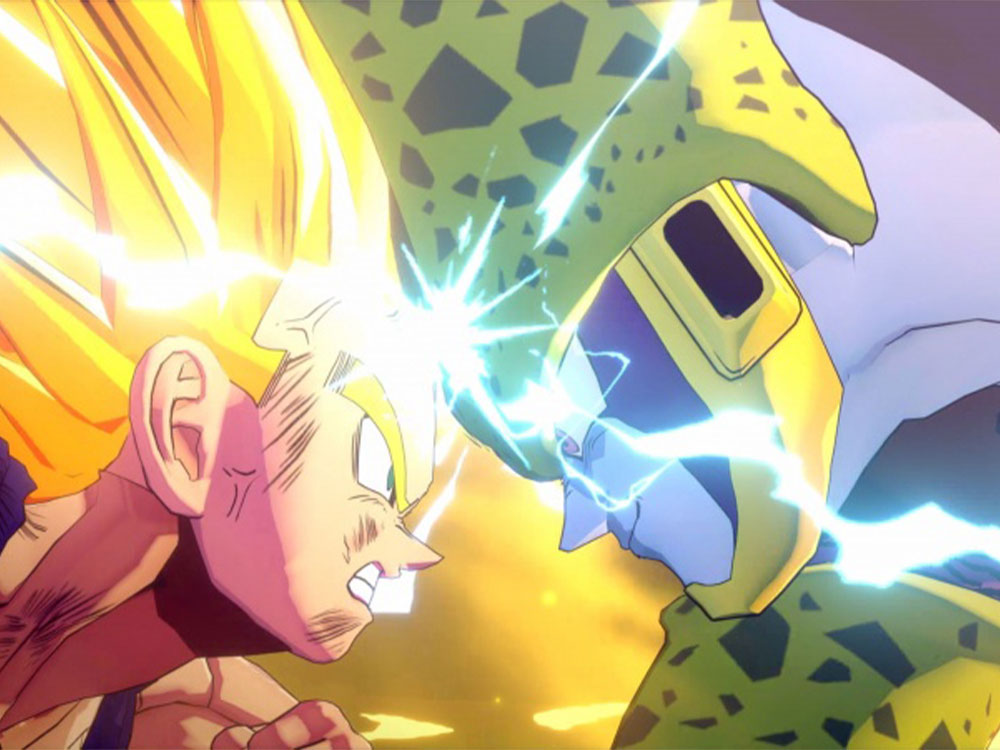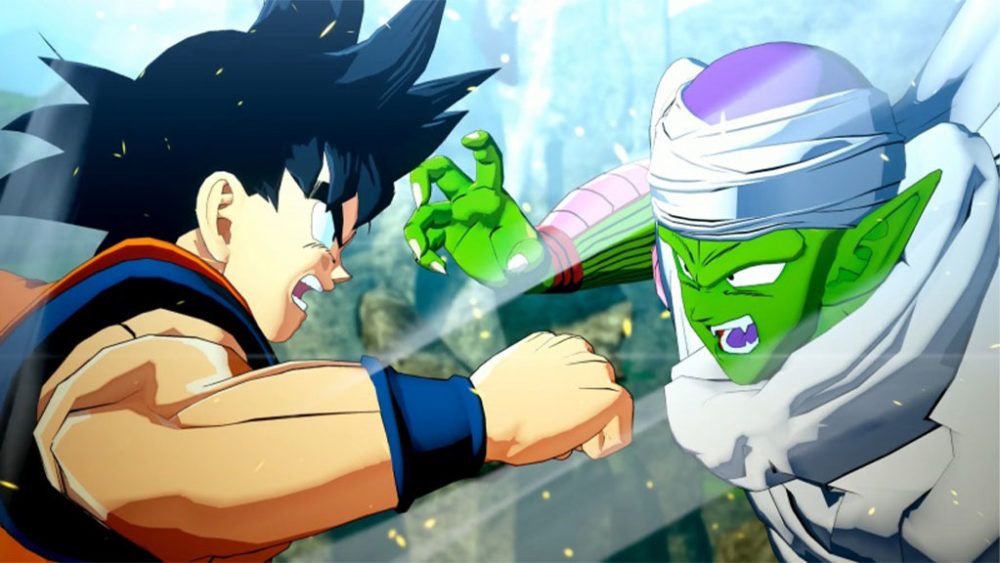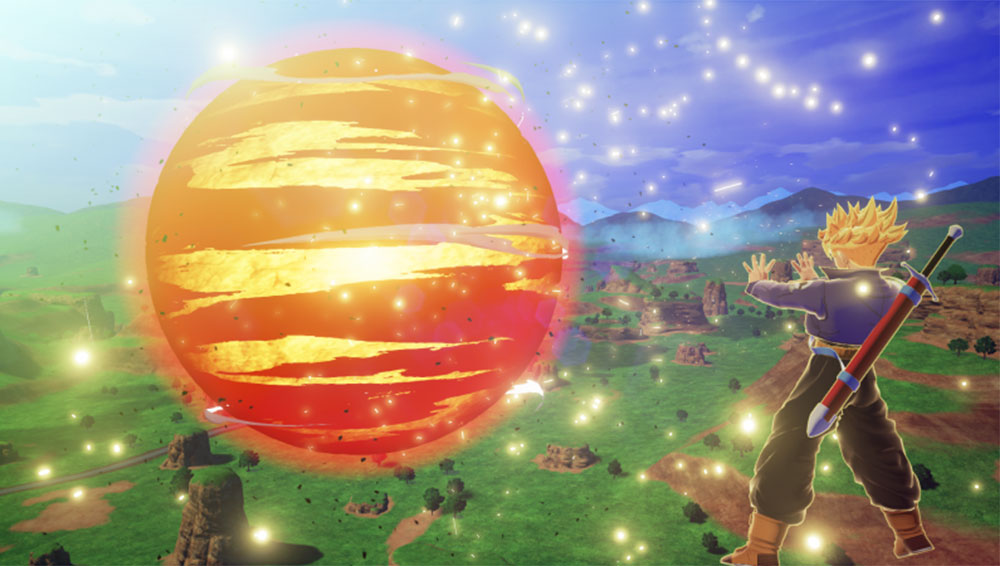Here’s my gaming hot take of the day: More game designers should take a moment to sit back and ask themselves, “why?” Sure, you can create a vast, open world. But why? Of course, you can formulate a complex, gated upgrade system, but … why? Perhaps they might have even asked themselves the question that I found myself asking all throughout Dragon Ball Z: Kakarot: It’s certainly possible to create a Dragon Ball Z game whose main innovation is creating a mass of extra air around the main plot, but — my gosh — why?
Dragon Ball Z: Kakarot is the latest in a long line of games capitalizing on the voracious and loyal fanbase of the classic anime series. I fully cop to being one of these fans; Dragon Ball Z was one of my favorite shows growing up, and I’ve returned frequently to the show and its many game adaptations over the years with much satisfaction. It’s unsurprising that it’s such a frequently revisited franchise. The show is anime at its best: an irresistible blend of dynamic characters and blood-pumping action. With this in mind, Dragon Ball Z: Kakarot passes the most important test: It’s a gorgeous and faithful recreation of the beloved franchise. Unfortunately, it dilutes its own impact with a series of increasingly perplexing and unnecessary game additions that will leave even the most dedicated Goku fan asking, “… Why?”
Dragon Ball Z: Kakarot follows the story of the show through its four major plot arcs: The Vegeta saga, the Frieza saga, the Cell saga, and the Buu saga. Each one is recreated in full detail — from the big climactic fights that everyone remembers to small, more character-building moments that very few people do. There are even a few new avenues explored: new character backgrounds or small asides that deepen the storyline of the series. This breadth is the main strength of the game: It is a full and faithful adaptation of the original series, sparing very few moments in its retelling of the story. I actually caught myself having brief flashbacks to watching the original series or reading the original books because of an image or moment that had been recreated so spot-on that it flipped some weird memory switch in my brain. If the whole game was just moving from story event to story event with nary a care in the world, it would be a perfectly enjoyable — if unoriginal — experience.
The game’s combat system is where the cracks start to show. Any Dragon Ball Z game worth its salt is going to start and end with the quality of its combat, and there is a lot to like here: The terrain is nice and destructible, punches land with weight, and the toughest battles feel epic in their scope and difficulty.
But play long enough, and the issues begin to pile up. The attack variety is limited, and after a while, most battles begin to feel a little button-mashy and repetitive in strategy. While some of the main battles are well-balanced and challenging, a vast majority of the story battles are so easy that they become tedious at best — and pointless at worst. And the enemy artificial intelligence (AI) is bullishly simplistic: They’ll sit and take your attacks until they suddenly decide to counter-strike and repeat similar attack patterns over and over, a choice that seems to have been made to allow players to learn how to counter-attack. Instead, it only serves to flatten the excitement of the battle. In all, the combat system succeeds on a macro level, slipping you thrillingly into the shoes of some of your favorite Z fighters as they save the world from one Big Bad after another. But on a smaller, more persistent level, the lack of polish and variety hamstring the combat from reaching its juicy potential.
While the nostalgia factor is high and the combat is middling, the really glaring issues lie in the role-playing (RPG) aspects of the game. Kakarot is not the first Dragon Ball iteration to attempt to inject RPG elements into its gameplay, but it has trumpeted the size and explorability of the world around the player, full of side quests and collectibles scattered across the map. Given the most infamous part of Dragon Ball Z’s history, this is a rather confusing choice. DBZ was famous during its run for its protracted, drawn-out events — a single fight could consist of a dozen episodes of extremely buff people screaming and chucking light beams at each other. Here, Kakarot takes that even further by asking a question few people would cop to ever wondering: “Hey, what would happen if instead of fighting bad guys, Goku just kind of flew around and fished and pulled apples out of trees?”
The addition of side missions and world exploration would, you would think, make the game feel overstuffed — too full of things to do and people to see. But, oddly enough, the large world aspect to me felt too cavernous. Side missions are few and far between, and often not worth the time, as many are just glorified fetch quests, not story expanders.
The open-world design sets out to be an exciting expansion of the DBZ world, but instead just feels like a lead balloon in the middle of proceedings: heavy, distracting, and generally in the way of people having a good time.
In addition, Kakarot goes out of its way to build in a series of skill menus and stat boosters that further complicate the path through the game. Cooking is a new visitor to the DBZ video game universe, and while cooking meals offers your character permanent and significant stat boosts, the tedium of tracking down and assembling ingredients to cook with often makes it feel more trouble than its worth. Your special skills and attacks can have their power boosted by progressing through a skill tree, but again, the item collecting you do to unlock points to add to your skill tree feels more tedious than worthwhile.
A new system, called community boards, lets you use different bonuses determined by type — training, cooking, adventure, etc. — to boost your character’s strength in a myriad of ways. But this system felt needlessly confusing: It was a struggle to navigate, with very little guidance for how to use it as effectively as possible. In the interest of giving credit where credit is due, there are a lot of ideas and concepts floating around the world of Kakarot; however, the breadth of content combined with the lack of focus around it tends to do more harm than good.
Dragon Ball Z: Kakarot is a game at war with itself. There is a lot to praise: Taking it purely as the newest imagining of the Dragon Ball franchise, this game’s respect for its source material and attention to even the smallest detail when it comes to recreating it easily places it at the very top tier of Dragon Ball Z video games. But the actual gameplay leaves so much to be desired. Strip away the base appeal that being a “Dragon Ball Z game” provides, and you’re left with a lackluster action RPG that slogs more than it soars.
In the end, Kakarot has a lot to give in the way of filling any Dragon Ball Z fan’s series fix for the year, if you’re willing to take it. But there’s a heavy chance that at some point in the game, whether early on or more toward the middle as things begin to blend and blur together, you’ll find yourself asking the dreaded, “why?” Unfortunately, in this game, answers to that question tend to be as difficult to track down as an elusive Dragon Ball.
Photos: Bandai Namco Entertainment



